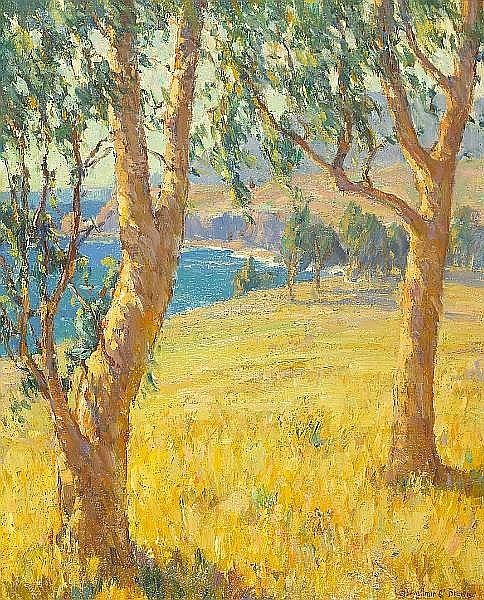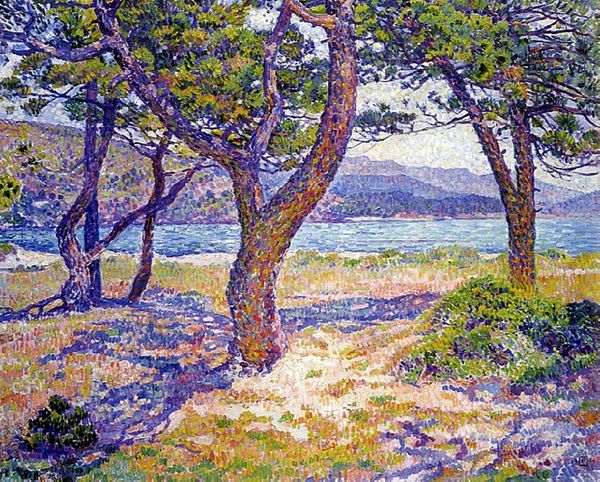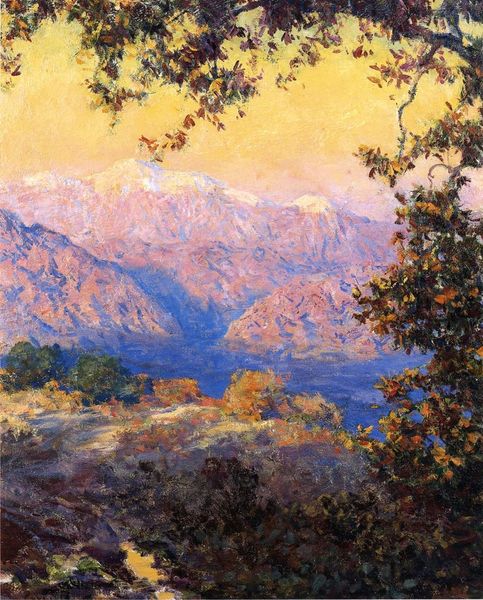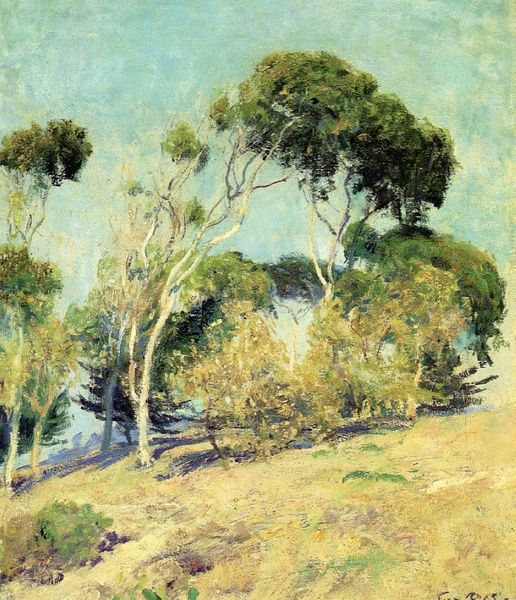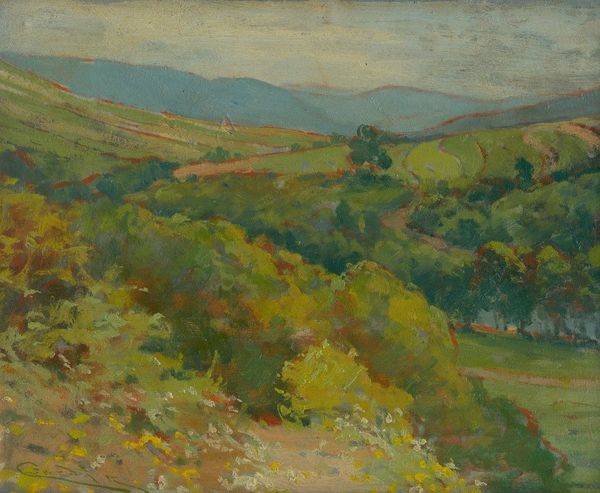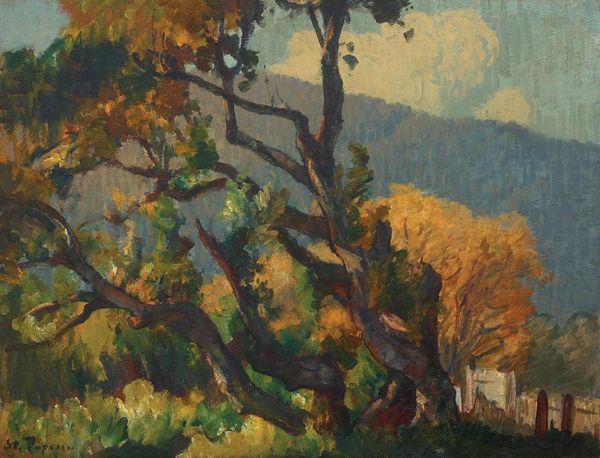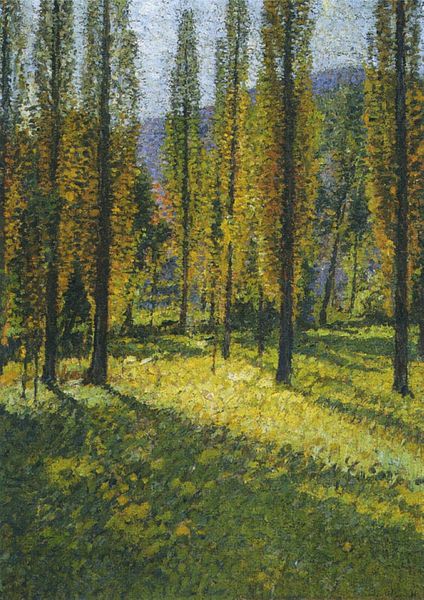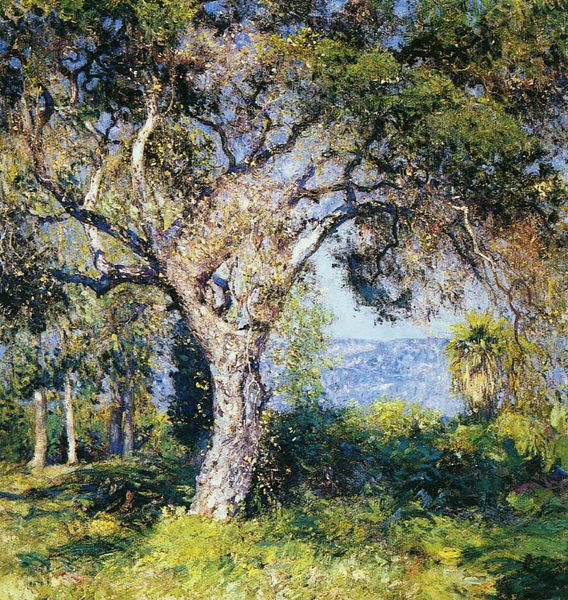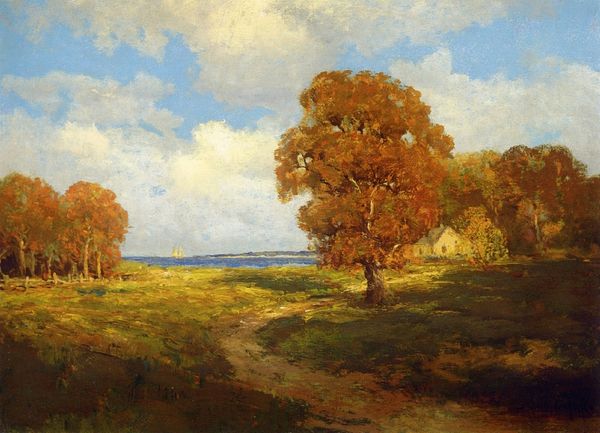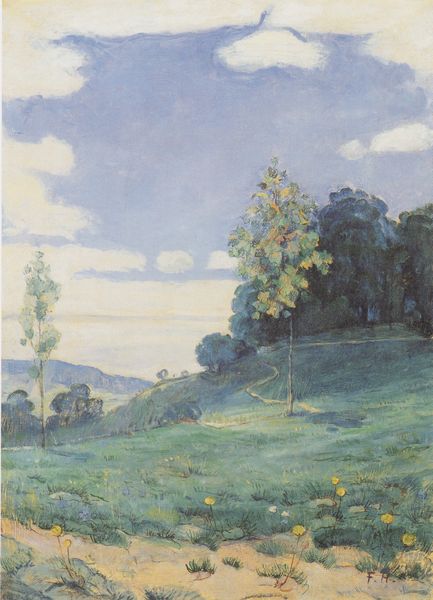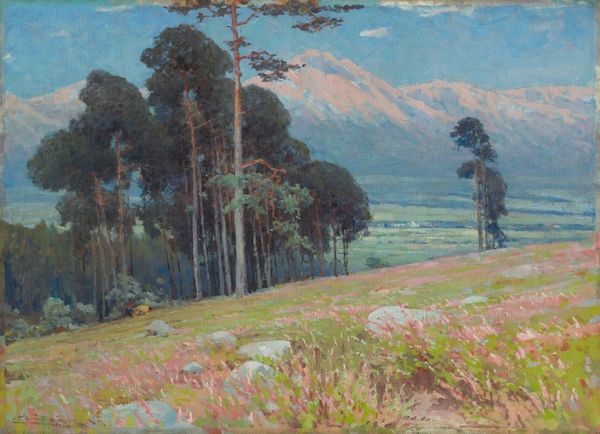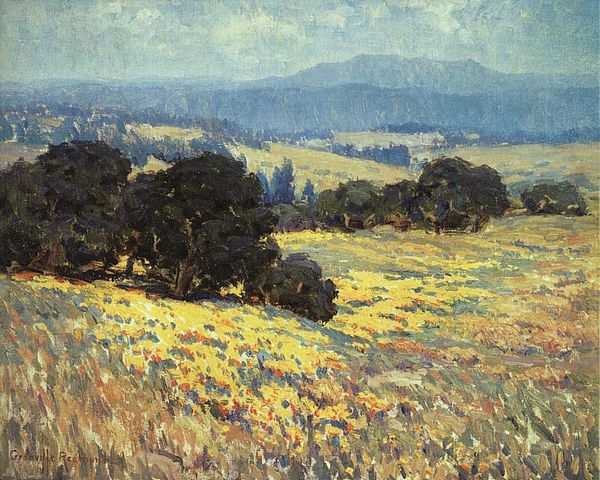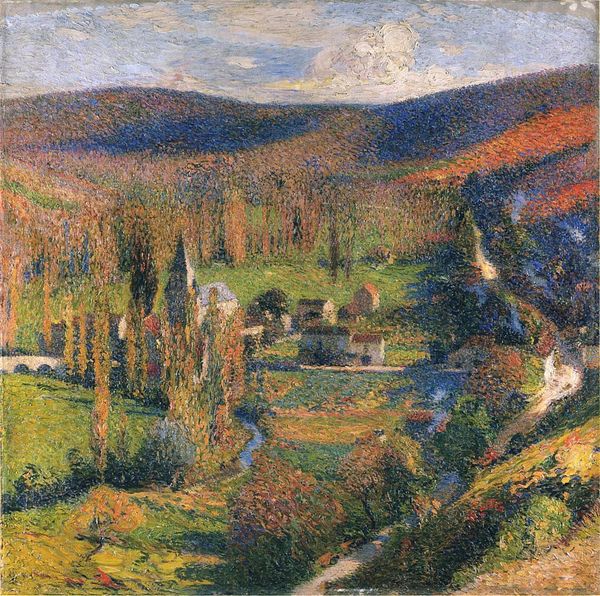
Copyright: Public domain
Editor: We’re looking at Benjamin Brown’s “Laguna Vista” from 1915, an oil painting that immediately evokes a sense of calm and warmth. The brushstrokes are visible, and the scene feels bathed in a golden light. How do you interpret the symbolism in this piece, or what stands out to you as particularly meaningful? Curator: This work strikes me as a visual poem about California, not just as a physical place but as a state of mind. Notice how Brown frames the vista through the trees – almost like looking through a sacred grove. What do trees often symbolize? Editor: Hmmm… connection to nature, growth, life... Curator: Exactly! And the water – vast, serene – that is often a symbol of renewal and the subconscious. Think about the Laguna coastline during this era. Artists were drawn to its beauty but also the promise it held, the “California Dream.” Brown’s work isn’t just a landscape; it’s an invitation. Editor: An invitation to what, exactly? To move there? To appreciate beauty? Curator: Perhaps it's an invitation to contemplate one's place in the world, mirroring how these landscapes beckoned westward migrants seeking new beginnings. And consider the time it was painted – 1915. Europe was engulfed in war, while California offered refuge, a sunny alternative. It’s an image imbued with longing for peace. Does that add another layer for you? Editor: Definitely! Seeing it as a kind of hopeful counterpoint to the war…it’s more than just pretty scenery then. Curator: It uses readily legible symbolism to offer something deeply moving. Its success lies in inviting us to imprint our hopes and memories onto that iconic vision. Editor: That gives me a lot to think about regarding the power of symbols and cultural memory embedded in landscapes. Thank you.
Comments
No comments
Be the first to comment and join the conversation on the ultimate creative platform.
